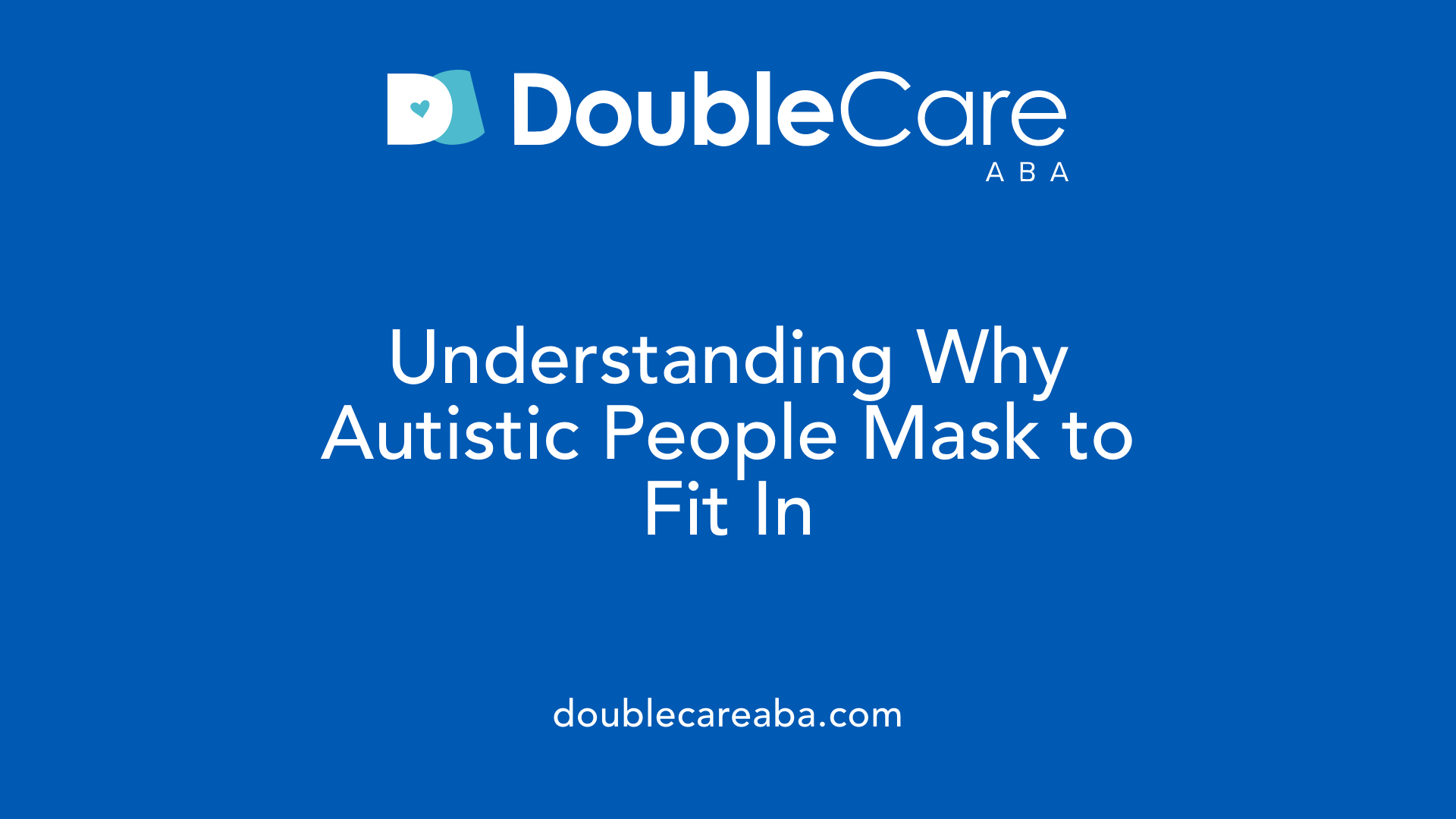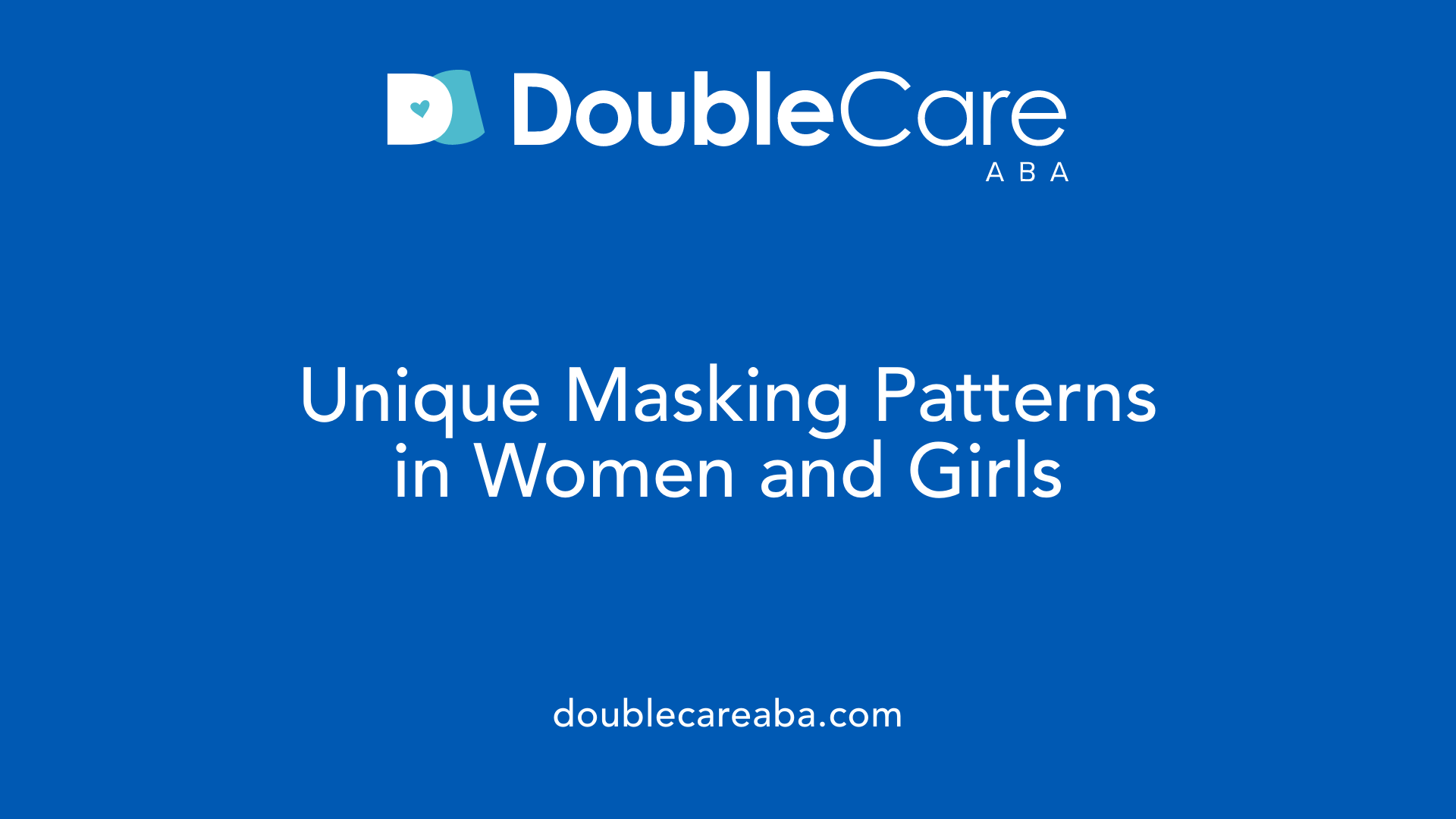Understanding Autism Masking: A Hidden Challenge
Autism masking, also known as camouflaging, is a complex phenomenon where autistic individuals consciously or unconsciously hide or suppress their traits to blend in with neurotypical society. This behavior, driven by societal pressures and internalized stigma, can have profound effects on mental health and complicate diagnoses. Exploring what autism masking entails, how it manifests, and its broader implications can deepen understanding and foster a more inclusive environment for autistic individuals.
Defining Autism Masking and Its Characteristics
Autism masking, also known as camouflaging, describes the behaviors that individuals with autism spectrum disorder (ASD) use—whether consciously or unconsciously—to hide or suppress their autistic traits. These behaviors aim to help them appear more neurotypical and fit in with societal expectations.
Typical masking behaviors include mimicking social cues like smiling or nodding, maintaining eye contact despite discomfort, and scripting conversations to manage social interactions more smoothly. People may also suppress stimming behaviors—such as hand-flapping or rocking—and control facial expressions and body language to avoid drawing attention.
Masking involves a high level of vigilance and self-monitoring, as individuals constantly assess and adjust their behavior to meet external standards. This may happen in various environments, including workplaces, schools, or social gatherings with friends or family. While these strategies can sometimes help people gain acceptance or reduce the risk of judgment and discrimination, they are often draining and can take a toll on mental health.
Many who mask do so because of societal pressures that discourage authentic autistic behaviors. Over time, chronic masking can lead to emotional exhaustion, burnout, and mental health challenges such as anxiety, depression, or a sense of lost identity. Women, girls, and adults are especially likely to mask, as societal messages often pressure them to conform and hide their differences. Although masking can offer short-term social benefits, it frequently delays diagnosis and can cause significant physical and emotional fatigue.
Manifestation of Autism Masking in Individuals

How does autism masking manifest in individuals?
Autism masking appears through a combination of behaviors that help autistic individuals blend into societal norms, either consciously or unconsciously. One common way it shows is by rehearsing social interactions beforehand. Many people with autism develop scripts or practiced phrases to navigate conversations smoothly.
They often mimic facial expressions, gestures, or mannerisms they observe from others, aiming to appear engaged and approachable. Maintaining eye contact, even when it feels uncomfortable, is a typical masking behavior, as it is often socially expected.
Masking can also involve suppressing natural autistic responses like stimming—repetitive movements or sounds that help regulate sensory input. Instead, individuals may develop strategies such as using self-monitoring techniques to hide these behaviors.
This effortful process requires a high level of vigilance and self-control, which can be mentally draining. The constant need to monitor one's actions and appearances can lead to exhaustion, burnout, and increased mental health risks like anxiety or depression.
The prevalence of masking is especially high among women and non-binary individuals, and those diagnosed later in life. These groups often mask to meet societal expectations or avoid judgment, which can delay recognition and diagnosis of autism.
While masking may offer short-term advantages—such as social acceptance and perceived safety—it can also result in a disconnection from one’s true self. Over time, it can cause feelings of alienation, emotional distress, and a sense of living inauthentically. Recognizing these manifestations is crucial to understanding the complex experiences of autistic individuals and providing better support.
Rationale Behind Masking: Why Do Autistic People Engage in This Practice?

Why do autistic individuals engage in masking?
Autistic individuals often mask their traits to fit into society’s expectations and avoid negative responses like prejudice, bullying, or discrimination. Masking helps them appear more neurotypical, which can facilitate social interactions, maintaining friendships, and succeeding academically or professionally.
Many people are not aware that they mask behaviors unconsciously, especially if they are diagnosed later in life. This effort to blend in becomes a way to meet social expectations and minimize discomfort in various settings.
However, this strategy comes with significant personal costs. It can lead to mental health issues such as anxiety, depression, and burnout. It may also cause a loss of identity, as individuals suppress their natural behaviors and interests.
Reducing societal stigma and increasing understanding of neurodiversity could lessen the pressure on autistic people to mask. Creating accepting environments encourages them to express their authentic selves without fear of judgment, promoting healthier mental well-being and genuine social connection.
In sum, masking is driven by a desire for acceptance and safety, but it highlights the importance of societal change to foster genuine inclusion.
| Reasons for Masking | External Pressures | Internal Motivations |
|---|---|---|
| To avoid stigma and discrimination | Societal messages that autism traits are unacceptable | Desire for social acceptance |
| To blend in socially | Fear of rejection or bullying | To reduce personal discomfort |
| To succeed in work or school | Pressures from peers and authority figures | To protect personal safety |
Mental Health Consequences of Masking
What are the effects of autism masking on mental health and well-being?
Autistic masking can deeply impact mental health, often leading to significant emotional and psychological struggles. Many individuals experience heightened stress and anxiety as they continuously suppress natural behaviors and rehearse social responses to fit societal expectations.
This persistent effort can result in emotional exhaustion and burnout, leaving them physically and mentally drained. Over time, masking can cause a loss of sense of identity, as individuals feel disconnected from their true selves due to the constant concealment of their authentic traits.
In addition to feelings of disconnection, masking increases the risk of developing depression and low self-esteem. The internal conflict between one's genuine self and the outward persona can accumulate, leading to feelings of shame, self-doubt, and social withdrawal.
Furthermore, the emotional toll of masking can make individuals more vulnerable to trauma, such as negative social interactions or discrimination, which can evoke feelings of shame or even abuse.
While some might mask to gain acceptance or safety temporarily, the long-term consequences include ongoing mental health issues. Chronic masking is associated with a higher likelihood of suicidal thoughts and behaviors, emphasizing how psychological burdens can become overwhelming.
In brief, masking often imposes a heavy emotional and psychological cost on autistic individuals. Recognizing these impacts highlights the importance of fostering understanding and acceptance within society, so people feel less compelled to hide their true selves, ultimately supporting better mental health and well-being.
Recognizing Signs and Indicators of Masking in Others

Observable behaviors
Individuals who are masking autism often display behaviors that appear rehearsed or overly controlled. You might notice someone practicing scripted phrases or reacting in ways that seem unnatural, such as maintaining eye contact despite discomfort or suppressing stimming behaviors like hand-flapping or rocking. They may also hide their interests, particularly if those interests are considered intense or unusual by societal standards.
Additionally, some people mask by mimicking the social cues of others—reproducing facial expressions, gestures, or mannerisms they have observed. This can create a surface-level appearance of ease in social settings, even if internally, they are struggling.
Social and emotional cues
Emotionally, masked individuals might struggle to express genuine feelings or may appear detached or overly agreeable to avoid conflict or judgment. Their facial expressions and tone of voice may be carefully curated, not necessarily matching what they truly feel. They might rehearse or script conversations to navigate social interactions smoothly.
Signs of emotional effort, fatigue, or stress during social engagement are common but subtle and often overlooked. Over time, the effort to maintain these behaviors can lead to exhaustion, burnout, or emotional distress, which may manifest as withdrawal or sudden outbursts.
Differences in masking among groups
Masking behaviors are more prevalent among certain groups, such as women, girls, and non-binary individuals. These groups often develop more sophisticated coping strategies—like practicing social scripts or minimizing their interests—to blend into societal norms.
Research also indicates that masking can vary based on cultural background, age, and social circumstances. For instance, individuals with higher intelligence or those in environments where neurodiversity is less accepted might mask more intensely to avoid discrimination.
Understanding these signs and differences can help others recognize when someone might be masking and encourage more supportive and inclusive interactions.
Special Considerations for Women in Masking

Are there specific considerations for autism masking in women?
Yes, there are particular nuances when it comes to masking in women with autism. Studies and clinical observations reveal that women and girls are more likely to engage in masking behaviors and to do so more frequently than their male counterparts.
This increased tendency is often driven by societal expectations and gender stereotypes. Women and girls face social pressures to appear socially adept, nurturing, and harmonious, which encourages them to conceal their autistic traits.
Common masking behaviors observed in women include mimicking social cues, rehearsing conversations, suppressing or hiding stimming behaviors, and hiding special interests. These strategies help them blend into social environments but are often mentally taxing.
The toll of these masking efforts can be significant, leading to emotional exhaustion, heightened stress, and mental health challenges such as anxiety and depression.
Furthermore, the prevalence of masking in women contributes to the underdiagnosis or late diagnosis of autism in females. As their external behaviors may mirror neurotypical patterns, clinicians might overlook or misinterpret signs, delaying access to necessary support.
Understanding these masking strategies is vital. Increased awareness can guide healthcare providers and educators to recognize subtler signs and to develop more sensitive diagnostic tools.
Supporting women with autism involves fostering environments that reduce the need for masking, encouraging authenticity, and offering tailored mental health resources. Recognizing the specific ways women mask allows for better, more compassionate support that affirms their identity and promotes well-being.
Measuring and Increasing Awareness of Autism Masking

How can autism masking be measured or identified?
Detecting masking behaviors in autistic individuals relies on a mix of self-report tools and observational strategies. Currently, no single official clinical instrument is dedicated solely to measuring masking, but researchers have developed useful tools like the Camouflaging Autistic Traits Questionnaire (CAT-Q). This 25-item questionnaire evaluates internal masking strategies across three areas: compensation, masking, and assimilation, providing a reliable assessment of how individuals hide or alter their autistic traits.
Discrepancy measures are also used, comparing an individual's self-perceived autistic traits with their observable behaviors to spot signs of masking. However, these methods often need further validation to determine their accuracy fully. In addition, caregiver reports and research-based assessments help capture masking, especially for those who might find self-reporting difficult or might lack insight.
To gain a complete picture, professionals often combine multiple approaches, such as self-reports, external observations, and caregiver feedback. While these methods can indicate masking, ongoing development and validation are necessary to create standardized assessment tools. Improving existing measures and developing new ones will be vital for better identification and understanding of masking behaviors in diverse populations.
How can awareness of autism masking be increased?
Raising awareness about autism masking involves a broad strategy that incorporates education, media, community engagement, and professional training. Public campaigns can explain what masking is, why autistic people do it, and how it impacts their mental health. These campaigns should include personal stories and testimonials to foster empathy and reduce stigma.
Media representation plays a crucial role. Documentaries, social media stories, and authentic portrayals of autistic people revealing their masking experiences can help the public understand the complexities and emotional toll involved.
Educating healthcare, education, and social services professionals is essential. Training on recognizing masking behaviors and understanding their effects can improve diagnosis, support, and accommodations. It can also prevent misdiagnosis or late diagnosis, especially among adults and women.
Community dialogue and support networks encourage open conversations about masking, creating safe spaces where autistic individuals can share their experiences without fear of judgment. The goal is to normalize diverse ways of being and to promote acceptance.
Together, these efforts can foster a society that recognizes the significance of masking, reduces misunderstandings, and supports autistic individuals in expressing their authentic selves without fear or shame.
Fostering Understanding and Acceptance
Autism masking is a complex, multidimensional phenomenon that, while helping individuals navigate social settings, can come at significant emotional and mental health costs. Increased awareness, societal acceptance, and tailored support strategies are vital to reducing the need for masking. Recognizing the signs, understanding the reasons behind masking, and implementing measures to support unmasking can promote mental well-being and authenticity for autistic individuals. Promoting education and empathy is essential for building a society where neurodiversity is celebrated and accepted, allowing individuals to express their true selves without fear or exhaustion.














